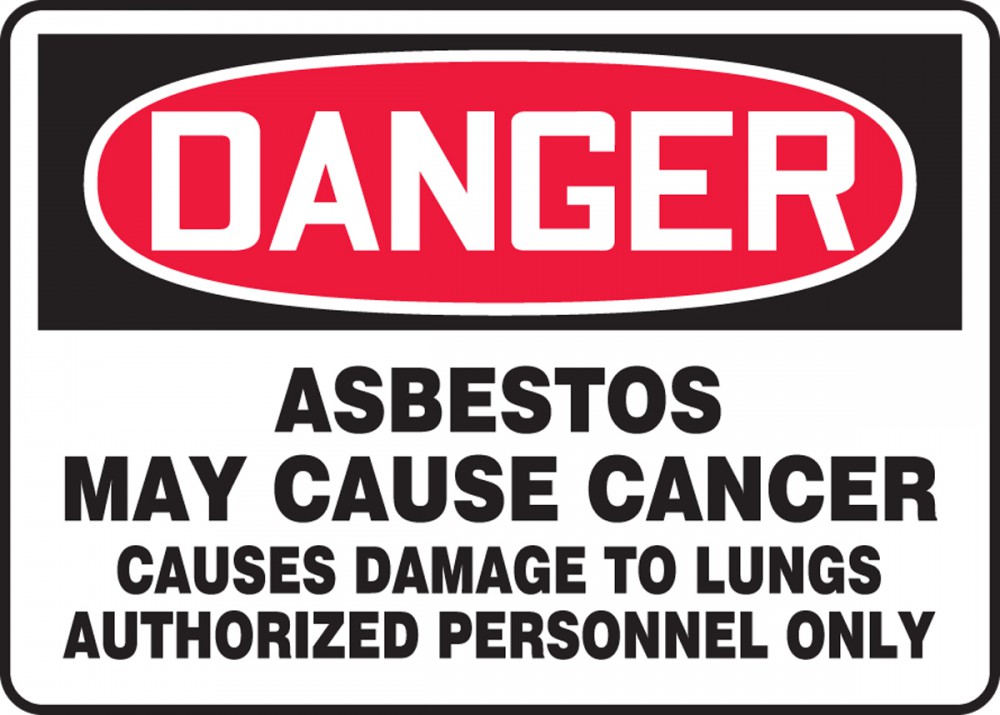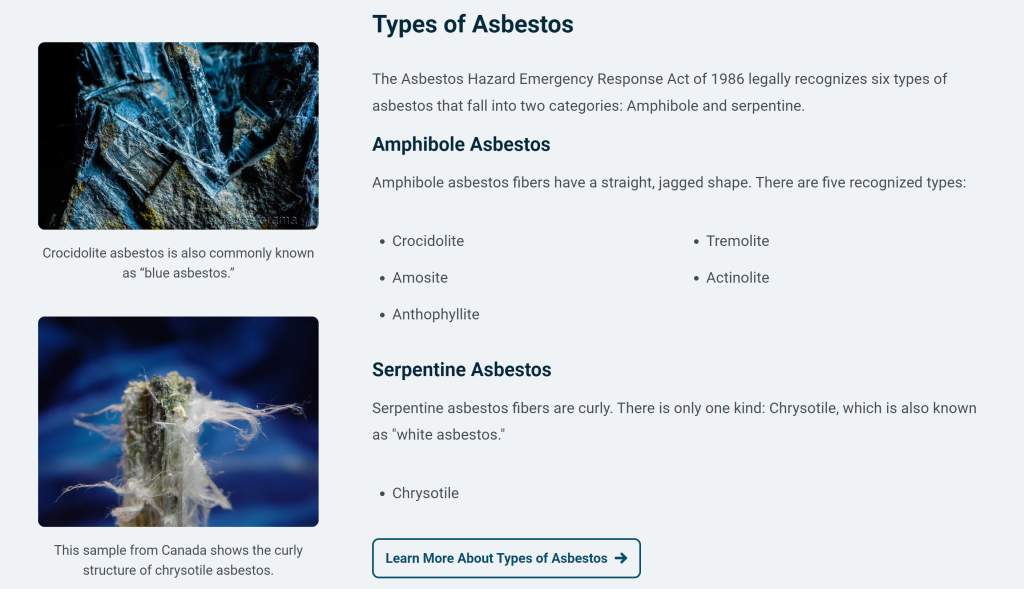Recently, I found myself walking around the city with my mom, and I noticed an asbestos danger sign near a construction site. I had no idea what asbestos was, so my mom told me an interesting story about her time in college, and how there was construction going on in her dorm. She remembered that the air began getting really thick and dusty until one of her worried dorm-mates asked the construction workers to test the air for asbestos. The test came back positive and over the regular safety levels, and my mom and her friends had to evacuate the dorm for the rest of the semester. This got me thinking…what makes asbestos so toxic to humans? And if it’s so toxic, why use it in buildings? So I watched a quick video by The Oregonian:
According to WebMD, asbestos is naturally found in rocks and soil. It’s a flexible mineral that can resist heat, chemicals, and electricity, which is why many manufacturing companies have used it in wall and attic insulation, shingles in roofs, vinyl tiles for floors, and the sides of houses. In fact, it’s so durable that it can even be used in car brakes and heat-resistant fabric! The danger of asbestos is that the mineral fibers its made of can easily separate and break into small pieces too small to see when damaged – making them easy to breathe in. If you breathe in too much asbestos, the asbestos can build up in your lungs and create many health problems. Basically, what happens is when asbestos gets trapped in your lungs, over time, the fibers can cause inflammation and scarring. Eventually, even genetic damage is possible.
Some of these health problems include lung cancer, mesothelioma (cancer in the lining of body cavities, eg. abdomen or chest), and asbestosis (affects the lungs, can cause permanent lung damage). Unfortunately, symptoms for mesothelioma and asbestosis don’t usually pop up until years after the damage has been done, and doctors won’t be able to fully repair the damage. They can help treat the symptoms though! Radiation or chemo for mesothelioma, and lung transplants or oxygen for asbestosis.
Asbestos is really very common, so most people have probably been exposed at some point – but if you’re exposed at low levels, you probably won’t develop these conditions. What you should worry about is when buildings around you are getting rebuilt, and the materials containing the asbestos get destroyed, releasing the asbestos into the air. After 1970, the US Government began controlling the use of asbestos in America, so it’s not mined or processed in the country. The EPA (Environmental Protection Agency) banned use of asbestos from paper, fake fireplace embers, and flooring felt (among other things) but it’s still used in products such as vinyl floor tiles, cement pipes, clothes, and brake pads. WedMD says that you have less to worry about if you’re living in a home with undamaged asbestos products, and more to worry about if your home is getting demolished or you worry in a construction site that might be taking apart products with asbestos.


So now let’s talk about the social impact of asbestos! An article written by Karen Selby, RN talks about the genetic connection between asbestos exposure and mesothelioma development. Interestingly, some people develop mesothelioma after getting exposed to asbestos, and others do not. Why? The level of exposure and amount of time spent exposed will serve as important factors, scientists have found that some people are just more likely to have a negative effect after coming in contact with the mineral fibers.
Some people develop mesothelioma after getting exposed to asbestos only one time! This fact lead scientists to look more deeply into the genetic component at play, and in a 2011 study at the University of Hawaii Cancer Center and Fox Chase Center in Philadelphia, they discovered that mutations of the BAP1 gene, which is a tumor-suppressing gene, increase patient risk of mesothelioma development. This study followed two families with high rates of BAP1 mutation. They noticed that every person who contracted mesothelioma also have the BAP1 mutation. More generally, the BAP1 mutation is found in about 70% of mesothelioma cases, making it a primary cause for mesothelioma development. This may lead to you think, well, can I inherit the BAP1 gene? Turns out, you can. And it can also develop later in life as certain cells change from benign to malignant.
Diagnosis for the BAP1 gene can be found through blood testing. It takes, on average, 2 weeks to get results for this particular gene. If a patient’s result comes back positive, they have a mutated BAP1 gene , and if it’s negative, they do not have a mutated BAP1 gene (their gene is normal).
I am not a doctor, and do not claim to be one. All of this information can be found in the hyperlinks I’ve included in this article. Any opinions I give here are solely my own, for educational purposes. This is not medical advice. If you have any questions, please contact your primary healthcare person. But I hope you found this blog post helpful, because I certainly did learn a lot!


